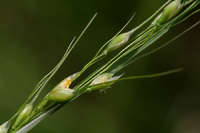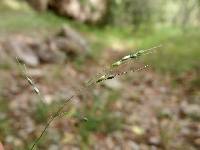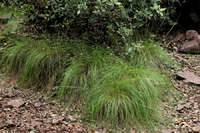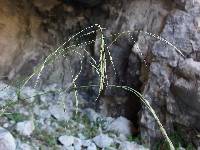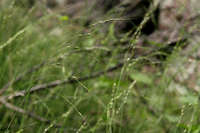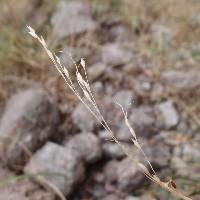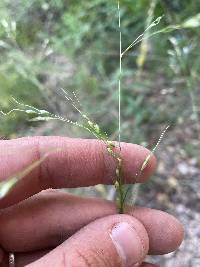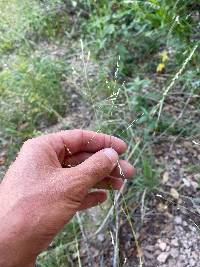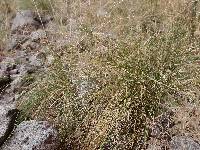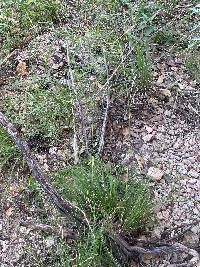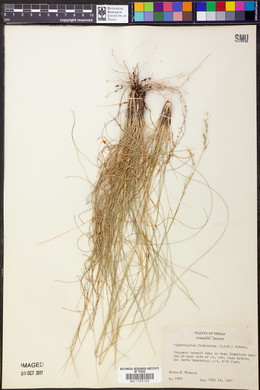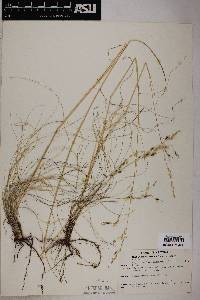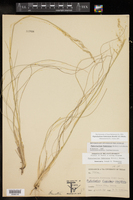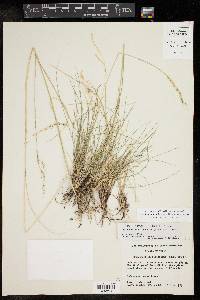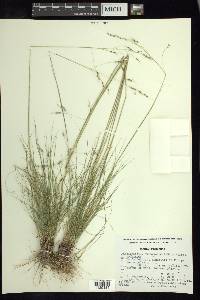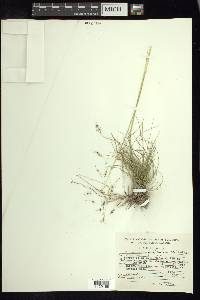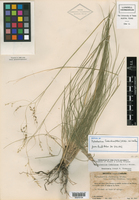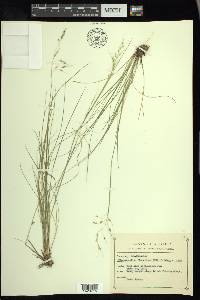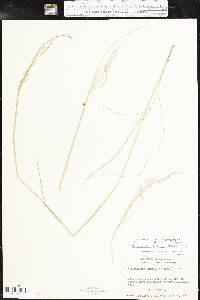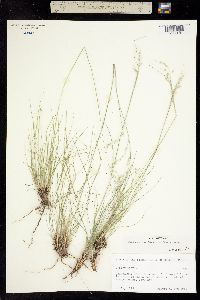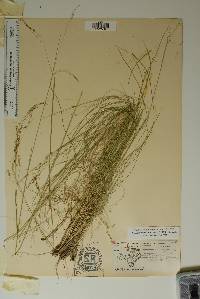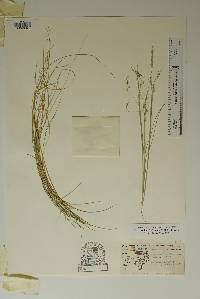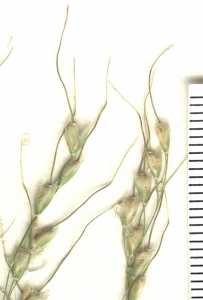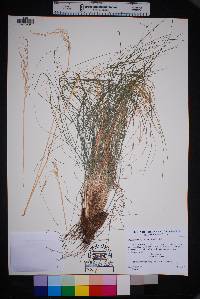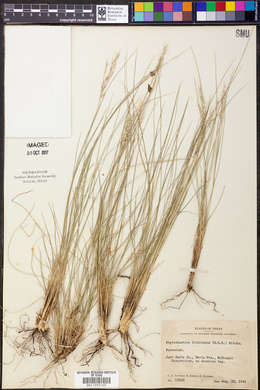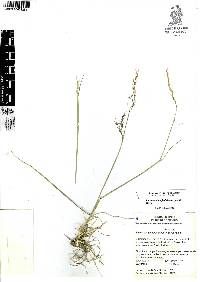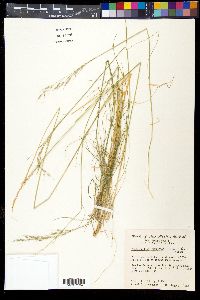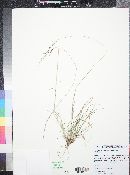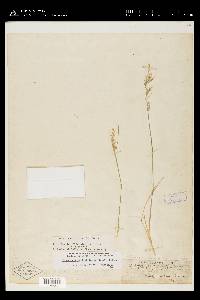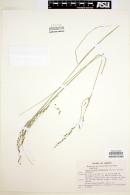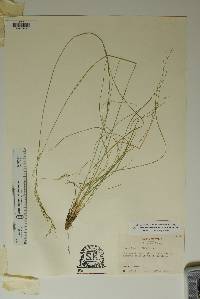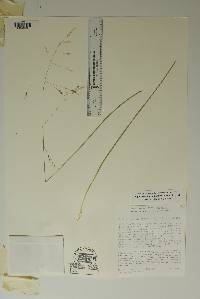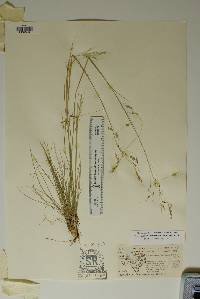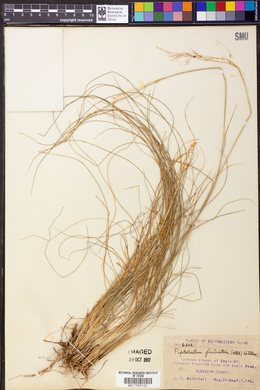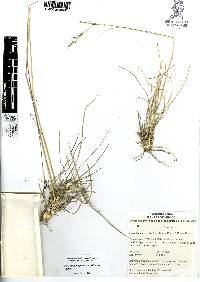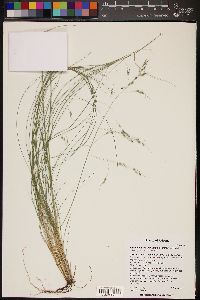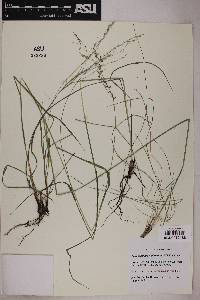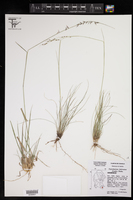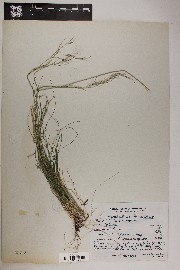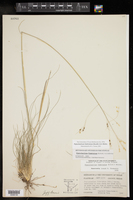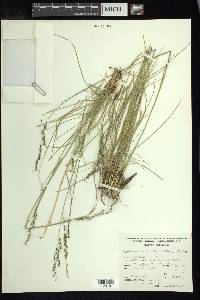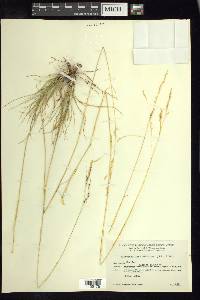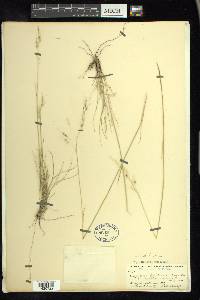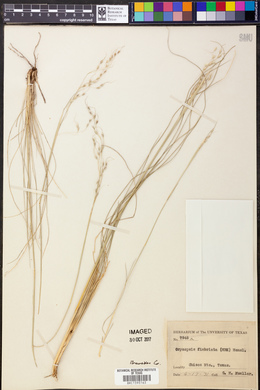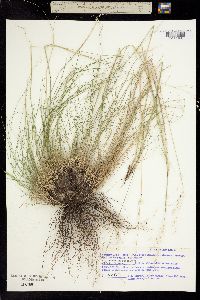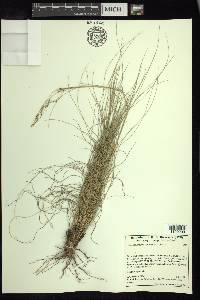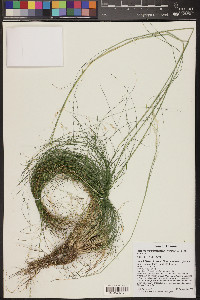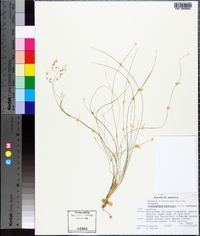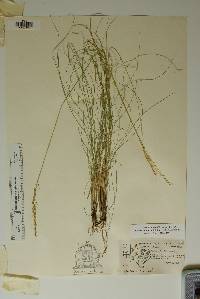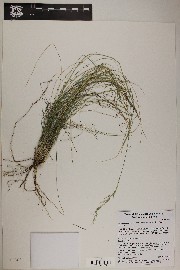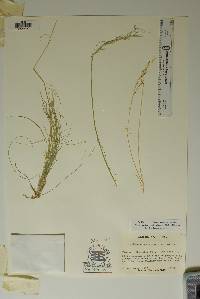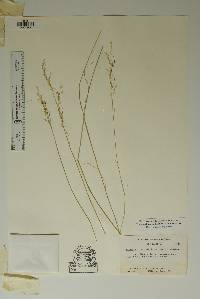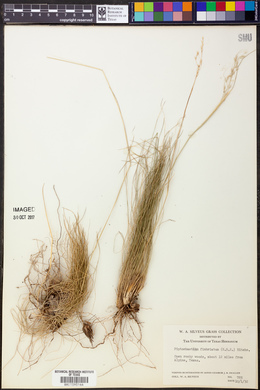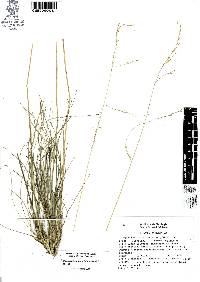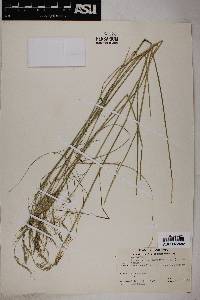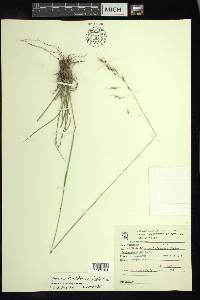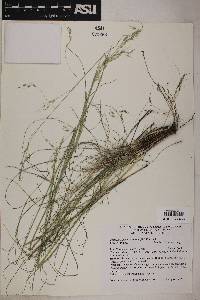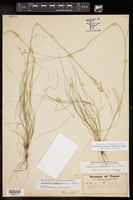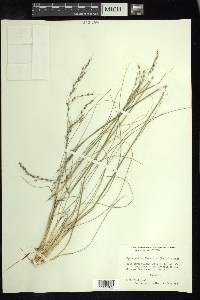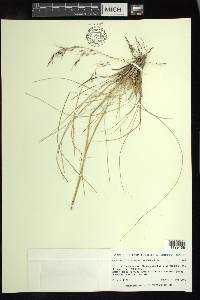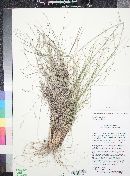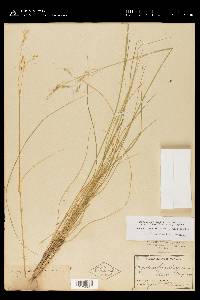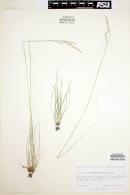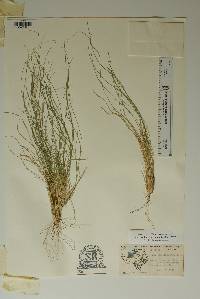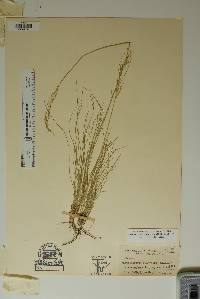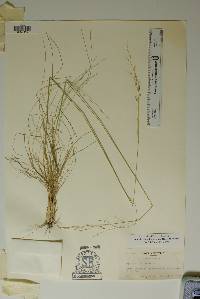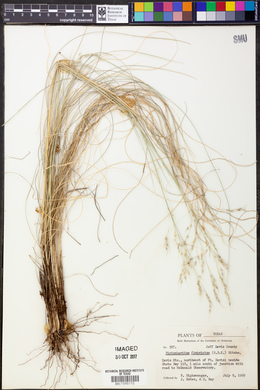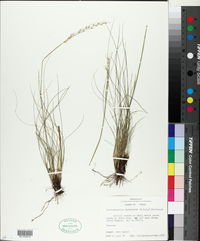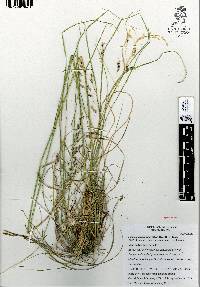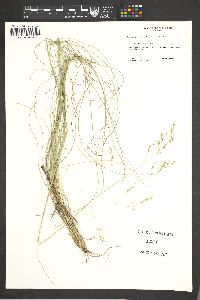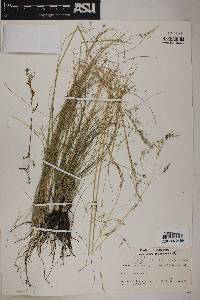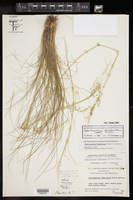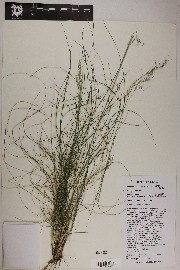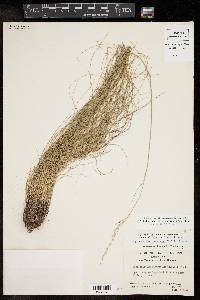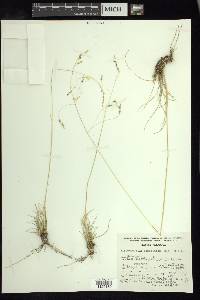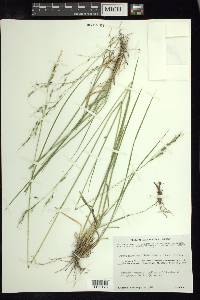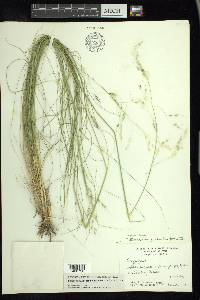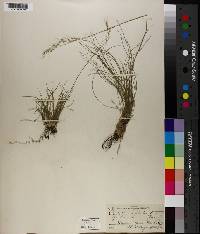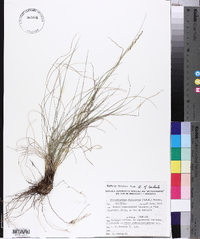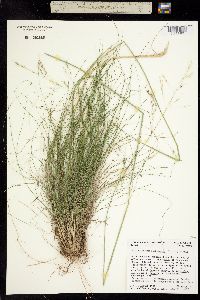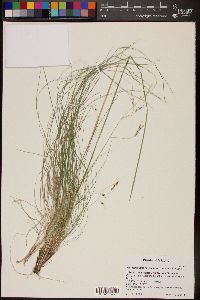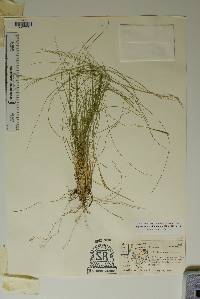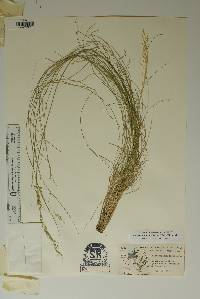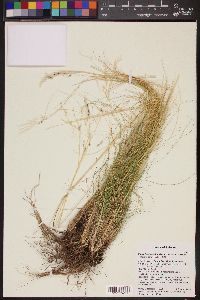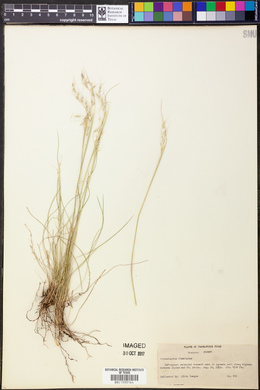
|
|
|
|
Family: Poaceae
pinyon ricegrass, more...Pinyon Spear Grass, pinon ricegrass
[Milium mexicanum Spreng., moreOryzopsis fimbriata (Kunth) Hemsl., Piptatherum mexicanum (Spreng.) Schult., Piptochaetium fimbriatum var. confine I.M. Johnston, Piptochaetium fimbriatum var. fimbriatum (Kunth) Hitchc., Stipa fimbriata Kunth] |
Culms 35-95 cm, usually glabrous, sometimes pubescent below the nodes; nodes 2-3, often dark, glabrous. Sheaths glabrous, smooth; ligules trun-cate to rounded, of basal leaves 0.4-1.8 mm, of upper leaves 1.5-2 mm; blades 6-26 cm long, usually involute and 0.3-5 mm in diameter, sometimes flat and 0.5-1(1.5) mm wide, 3-veined, both surfaces glabrous, veins often scabridulous, margins scabrous. Panicles 6.5-25 cm, open, often partially enclosed in the upper leaf sheath, with 20-60 spikelets; branches flexuous; pedicels 4-12 mm, flattened, hispid. Glumes subequal, 4-6.2 mm long, 1.8-3.1 mm wide, 5-7-veined, often partly purplish; florets 3-5.5 mm long, 0.6-1.9 mm thick, somewhat laterally compressed, rectangular to slightly obovate in side view; calluses 0.2-0.7 mm, blunt, strigose; lemmas tan to light chocolate brown, shiny, smooth, evenly pubescent when immature, hairs easily rubbed off; crowns about 0.8 mm wide, inconspicuous, glabrous or glabrate; awns 11-20 mm, persistent, twice-geniculate; paleas about 3.5 mm; lodicules 2, about 1 mm; anthers 0.3-0.5 mm, not penicillate. Caryopses 2.5-3 mm long, about 0.6 mm thick, fusiform. 2n = 42. Piptochaetium fimbriatum is an attractive species that grows in oak and pinyon woods of the southwestern United States and adjacent Mexico, and merits consideration as an ornamental. It has also been reported from Guatemala; the report has not been verified. Piptochaetium fimbriatum is not easily confused with other species in our range. Hitchcock (1951) treated it as including P. seleri (Pilg.) Henrard, a Mexican species with dull, rough, oblanceolate lemmas and persistent lemma hairs, an interpretation that is no longer accepted. It is occasionally confused with P. pringlei; it differs from that species in having shorter florets and blunt calluses. FNA 2007, Gould 1980 Common Name: pinyon ricegrass Duration: Perennial Nativity: Native Lifeform: Graminoid General: Perennial bunchgrass with stems 35-95 cm, usually glabrous, pubescent below the 2-3 nodes, nodes often dark, glabrous; with smooth glabrous sheaths. Vegetative: Blades usually involute to filiform, fine, mostly 1 mm or less in diameter, 6-26 cm long, rarely flat, usually in basal tuft; ligules truncate to rounded, to 2 mm in upper leaves. Inflorescence: Open panicle 6.5-25 cm, partially enclosed in upper leaf sheath, with 20-60 spikelets, branches flexuous and slender, pedicels 4-12 mm, flattened; glumes subequal, thin, broad and acuminate 4-6.2 mm long, 1.5-3 mm wide, 5-7 veined, partially purplish, florets 3-5.5 mm long, 0.5-2 mm thick, laterally compressed, rectangular to obovate in profile, disarticulating above the glumes; calluses 0.5-2 mm, blunt to acute, strigose; lemma thick pubescent, tan to light brown, with twice geniculate persistent awns 11-20 mm, lower segments twisted and scabrous. Ecology: Found in oak and pi-on woodlands from 5,000-7,000 ft ( 1524-2134 m); flowers July-September. Notes: Distinctive with its fine blades in a large bunch, along with the twice geniculate awns and the curving slender stems at anthesis, distinguished from the similar P. pringlei by the shorter florets, the lemma hairs that can be easily rubbed off, and the more acute calluses. Ethnobotany: Unknown Etymology: Piptochaetium is from Greek pipto, to fall and chaite, for bristle or long hair, while fimbriatum means fringed. Synonyms: Piptochaetium fimbriatum var. confine, Stipa fimbriata Editor: SBuckley, 2010 |
|
|
|


